With its magnificent backdrop of sea and mountains, it’s little surprise that the Old Boat of Caol is often described as Scotland’s most photogenic shipwreck.
The rusting hulk lies stranded on a sand and shingle beach on the shores of Loch Linnhe, and is overlooked by Ben Nevis.
Also known as the Corpach shipwreck, the decaying fishing vessel popped up here after a violent storm on a wild night in December 2011.
I paid it a visit when I was in the area recently, and of course dug out my phone and snapped about 200 photos.
It sits at a somewhat jaunty angle, which affords a plethora of picture opportunities.
You can approach the wreck from either Corpach or Caol – it lies between the two villages and is only a few minutes’ drive north west of Fort William.
Photogenic shipwreck
I parked up in Caol and wandered along the beach, crossing a small stream to reach the boat.
It was a bit of a dreich, cloudy day so while views of Ben Nevis were visible, they weren’t the very best.
I’m no photographer but I took pictures at various spots: up close; in front of the stream, which allowed me to include the water, wreck and Ben Nevis in one image; and at the picnic area next to the Corpach canal locks.
As I strolled round the wreck, I noticed an old rope hanging over the side of it.
Do NOT climb aboard!
For a few irresponsible moments, I considered hauling myself up on it and seeing if I could get on board for a wee explore.
I realised this would probably be very unwise – there’s sure to be rotten flooring and hazards galore.
The fact a man was watching me, shaking his head in what I imagined to be disapproval, was pretty off-putting, too. So I stayed on terra firma.
It was enough to gaze up at the peeling paintwork, rotting timbers and rusty chains and imagine how the boat came to rest here.#
Fascinating history of shipwreck
The history of the Old Boat of Caol stretches back almost 50 years.
It began life as a fishing vessel called the MV Dayspring in 1975, trawling the North Sea for herring and mackerel.
The 26-metre long boat was later re-named Golden Harvest.
When her skipper retired and sold her, she was shipped to Kilkeel in Northern Ireland to continue a life of fishing.
The boat returned to Scotland in the early 2000s where she was moored at Kinlochleven Pier in Loch Leven until 2009.
The owners at the time planned to convert Golden Harvest into a floating seafood restaurant but the project never got off the ground.
Eventually she was taken to Camusnagaul Bay near Corpach where she was bought by Lukas Pomahač , a carpenter and boat builder, who planned to turn it into a houseboat.
However, on December 8, 2011, a ferocious storm tore the boat from her chains and moorings.
The coastguard helped to control the landing of the vessel on the beach – and she’s been there ever since.
Iconic landmark
An iconic landmark and a magnet for photographers, it’s said that sunrise and sunset are the best times to shoot her, and misty days also offer the drama.
Further along the beach, not too far from the Old Boat of Caol, I discovered another wreck – a rather forlorn looking sailing boat with the name Argo faintly etched on its back.
There’s not much information about its fate so I can only assume it was ripped from its mooring in a squall.
Fierce storms
Certainly, fierce storms are common in this area.
The mouth of Loch Linnhe leads out to the Corran Narrows which are less than 200 metres wide, with strong tidal currents as a result.
The weather here can be utterly wild and this could well have contributed to the area’s history of wrecks.
A 10 metre dive to the bottom of Loch Linnhe takes divers to an old wooden wreck called The Calypso where only the bows remain intact.
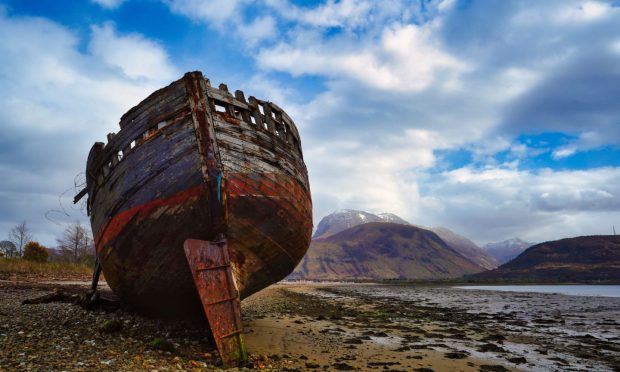
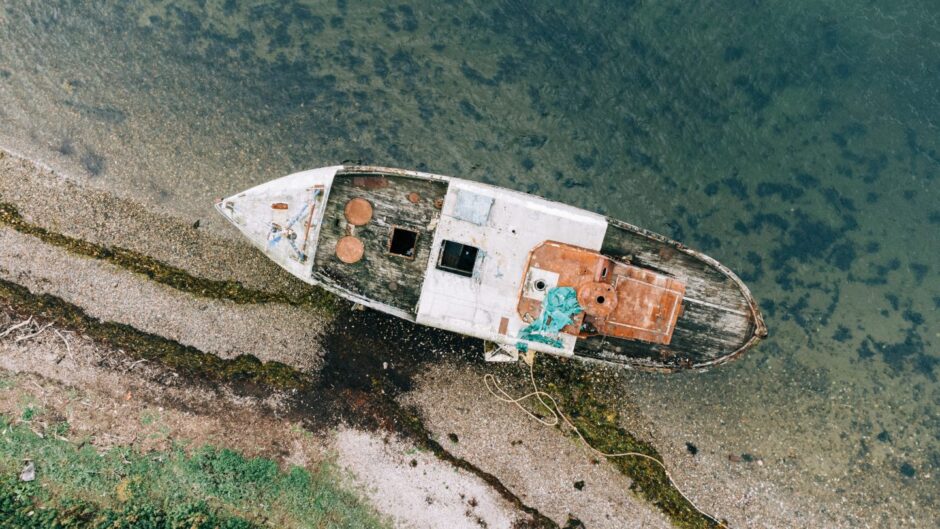
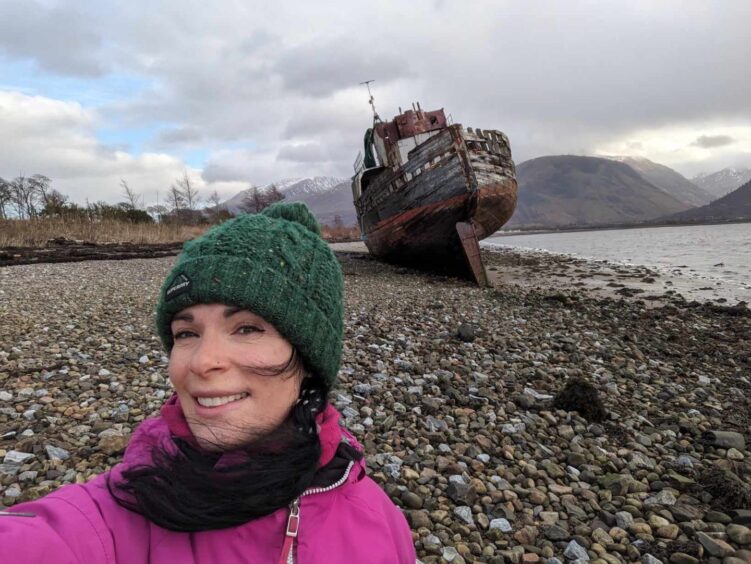
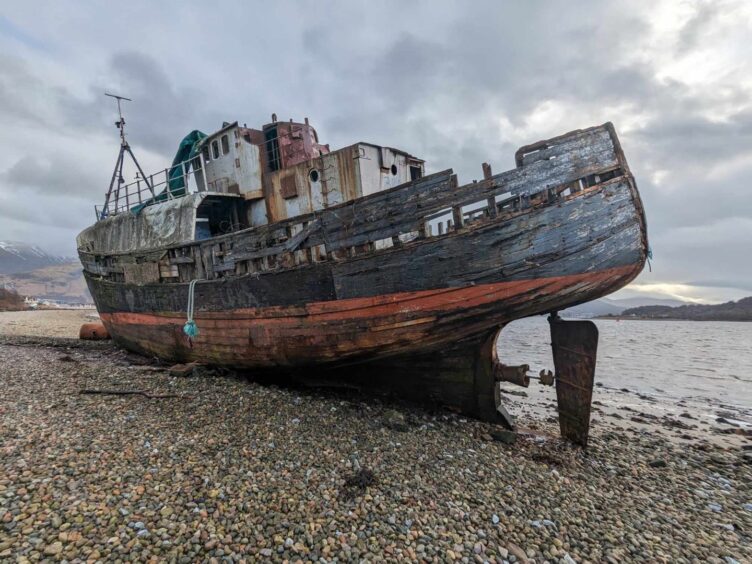
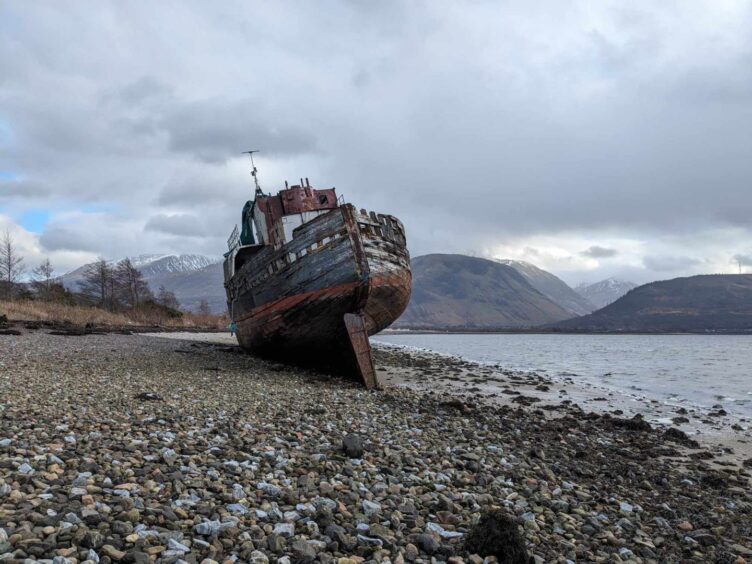
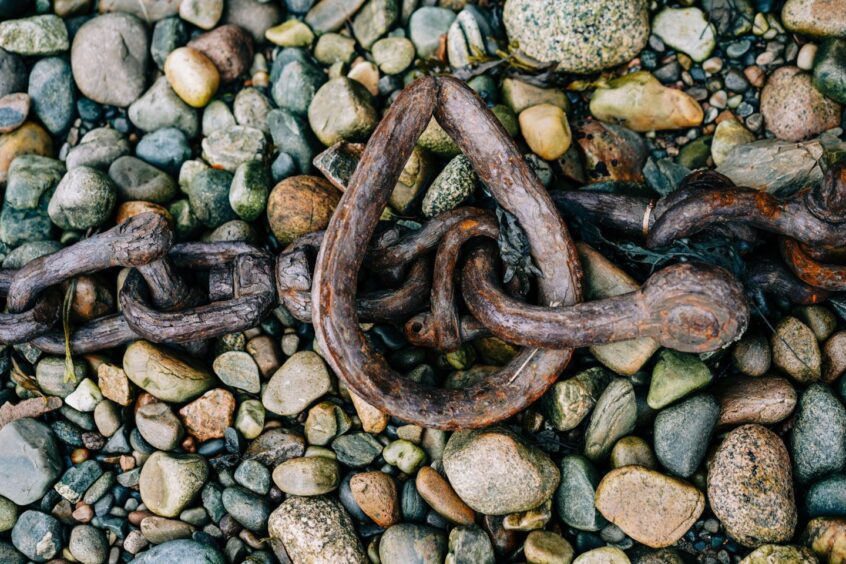
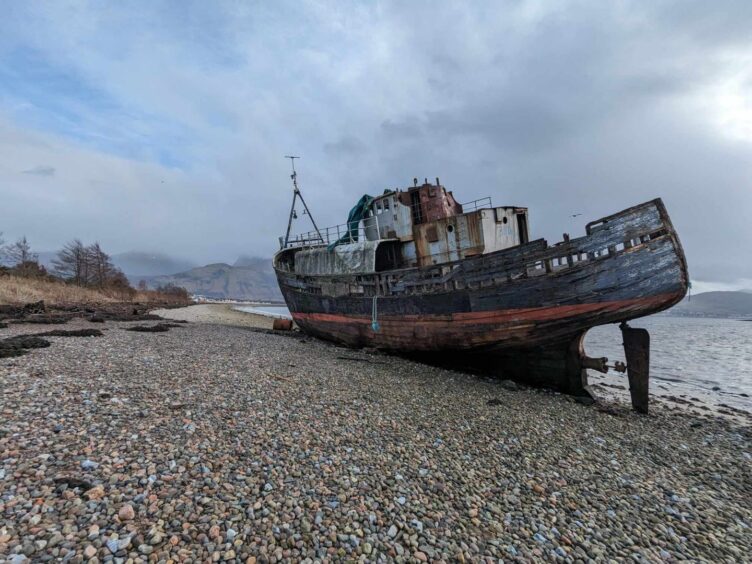
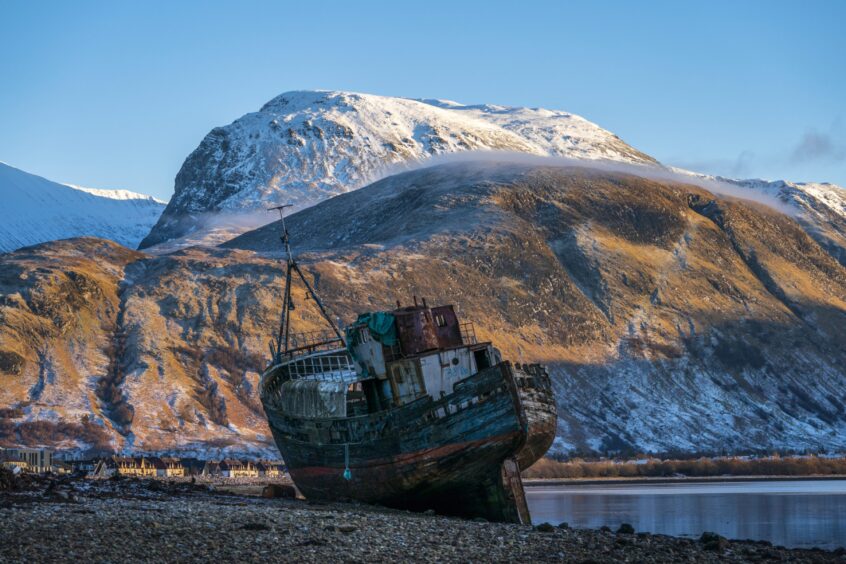
Conversation